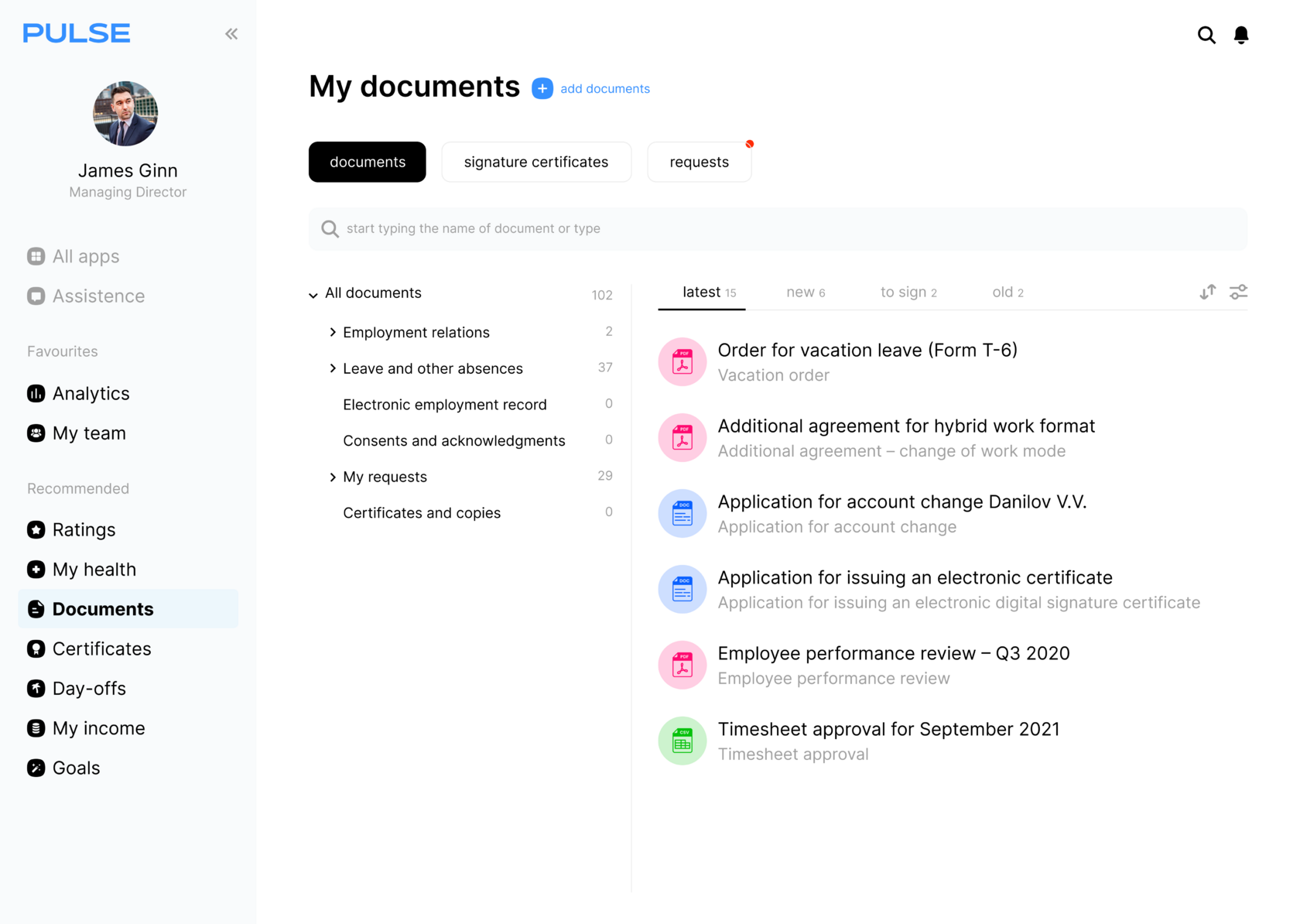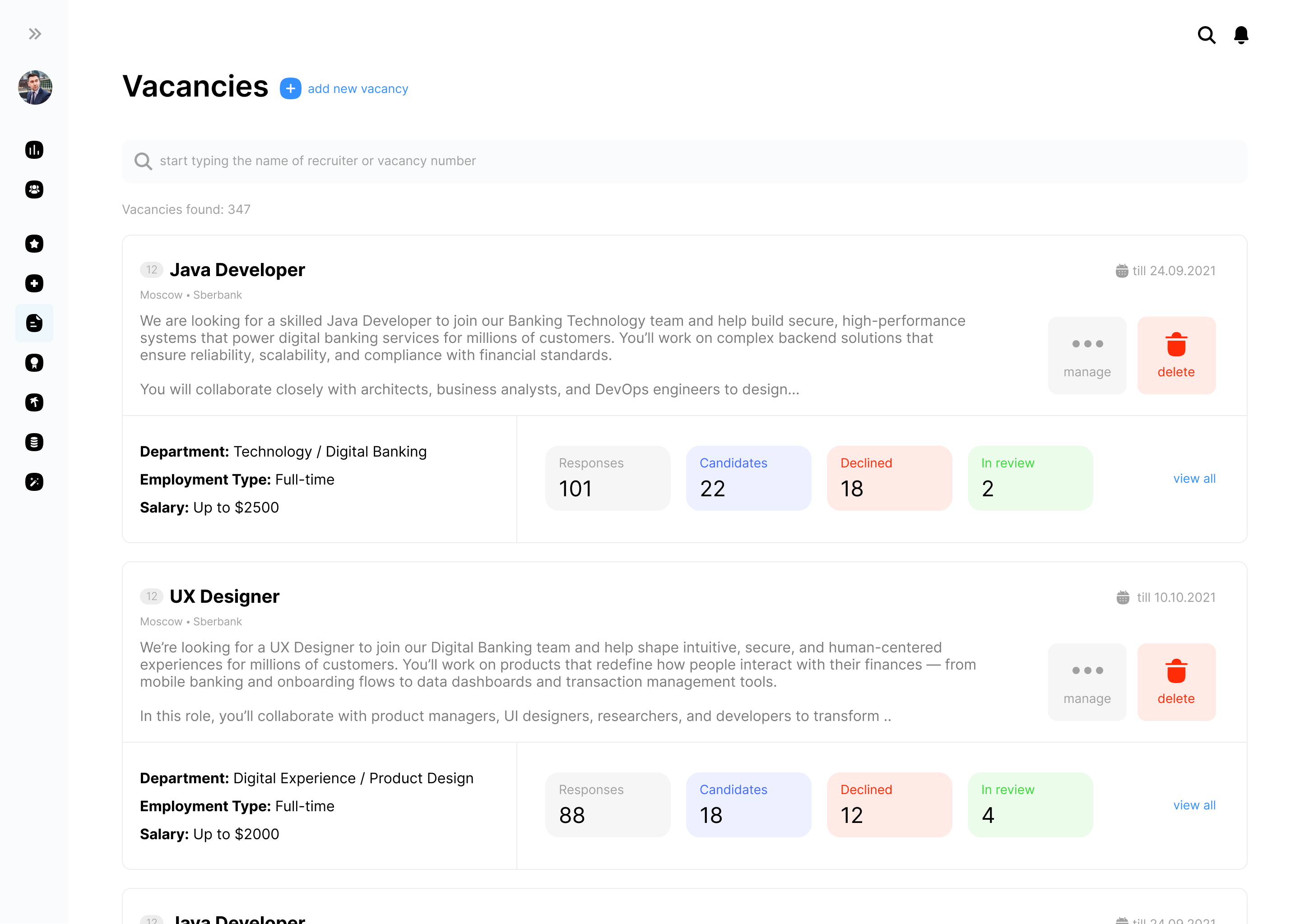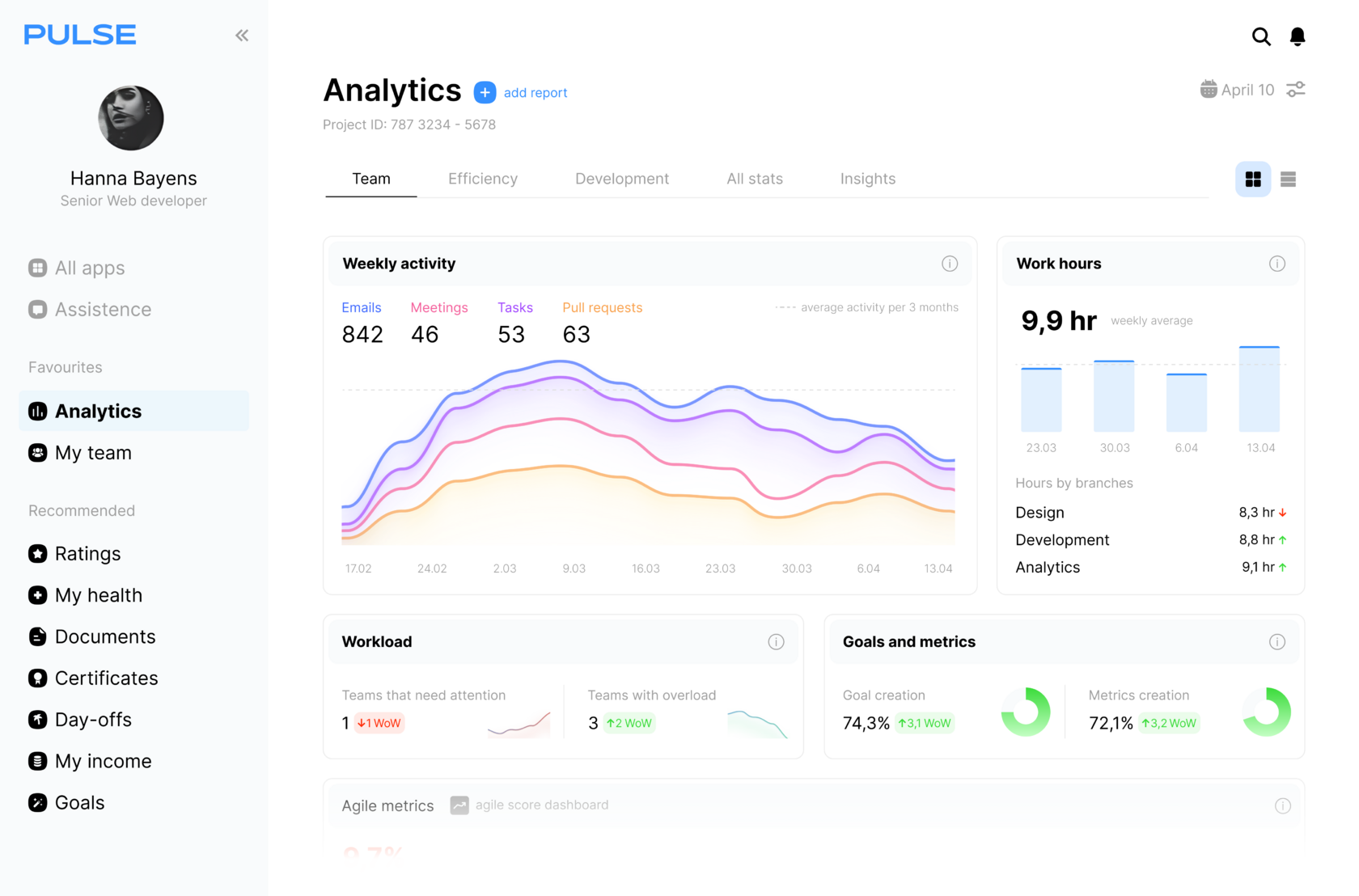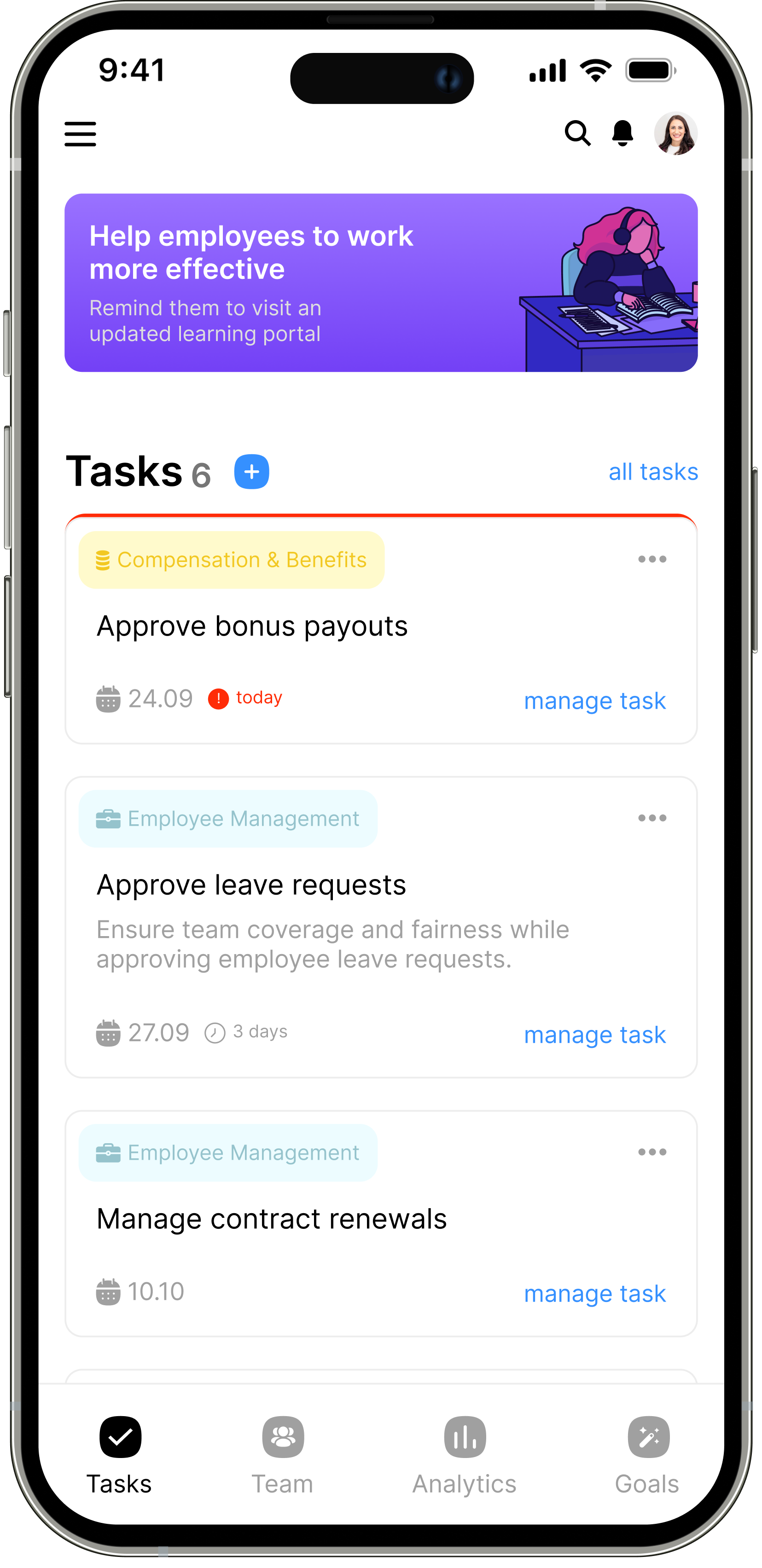SberPulse
Cloud-based HR platform automating workforce processes for 300.000+ employees
2020-2021
Wireframing
User Research
UI/UX
Design System
Desktop and Mobile Design Library
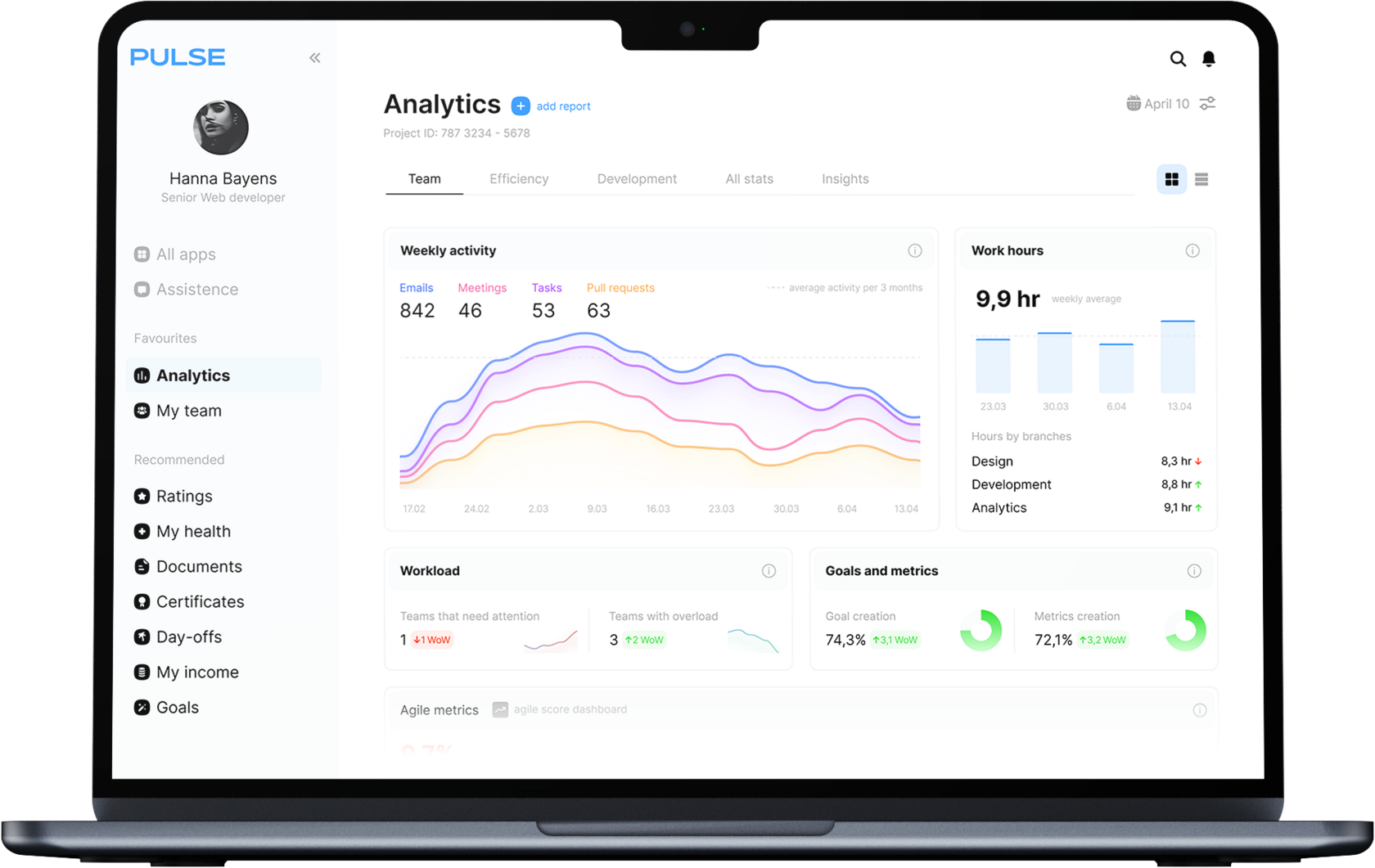
Challenge
Designing Sber Pulse meant tackling the tricky balance between complex HR needs and dozens of features – from hiring and learning to performance tracking and internal communications. The challenge was turning all that complexity into a smooth, intuitive platform that actually makes HR teams’ lives easier, supports smart decision-making, and drives real results across the business.
Sber, Russia’s largest bank with 200,000+ employees, needed a modern HR solution to replace a system that was slow, fragmented, and lacked actionable insights aligned with business goals. As part of a large design team, I contributed to creating Sber Pulse – a modern, enterprise-grade HR platform that combines global best practices with Sber’s internal expertise. The goal was to build a fast, intuitive, and data-driven solution that empowers HR teams and business leaders to make informed decisions at scale.
Context
Sber’s internal calculations estimate that the platform drives measurable impact: digital HR workflows save up to $55,000 per 1,000 employees, with full adoption delivering up to $410,000 in efficiency gains for a 3,000-employee company. Career development tools have boosted employee tenure by 10–15%, while faster onboarding reduces application time by 30% and offer acceptance by 10%, giving Sber a competitive edge in talent acquisition.
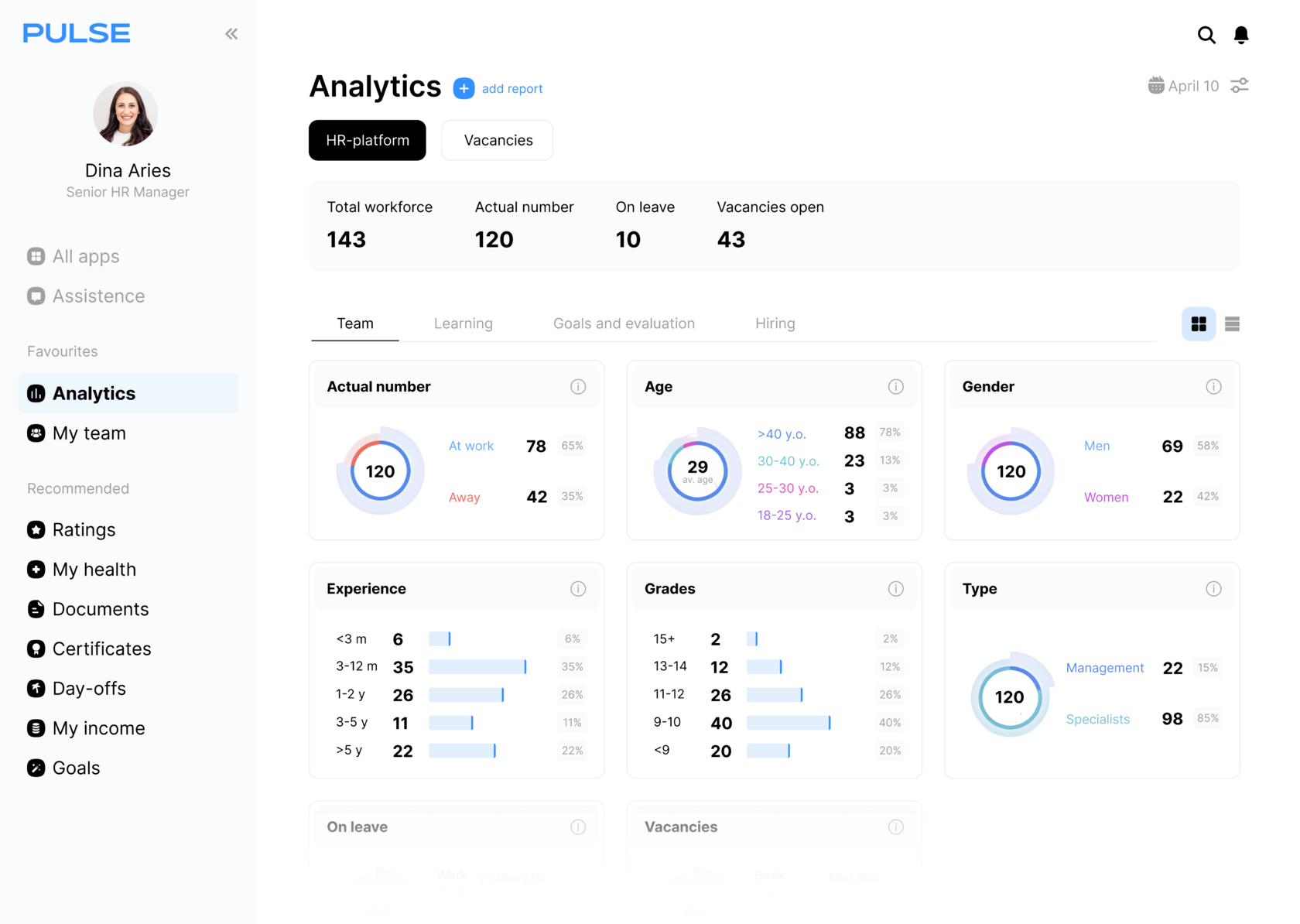
Results
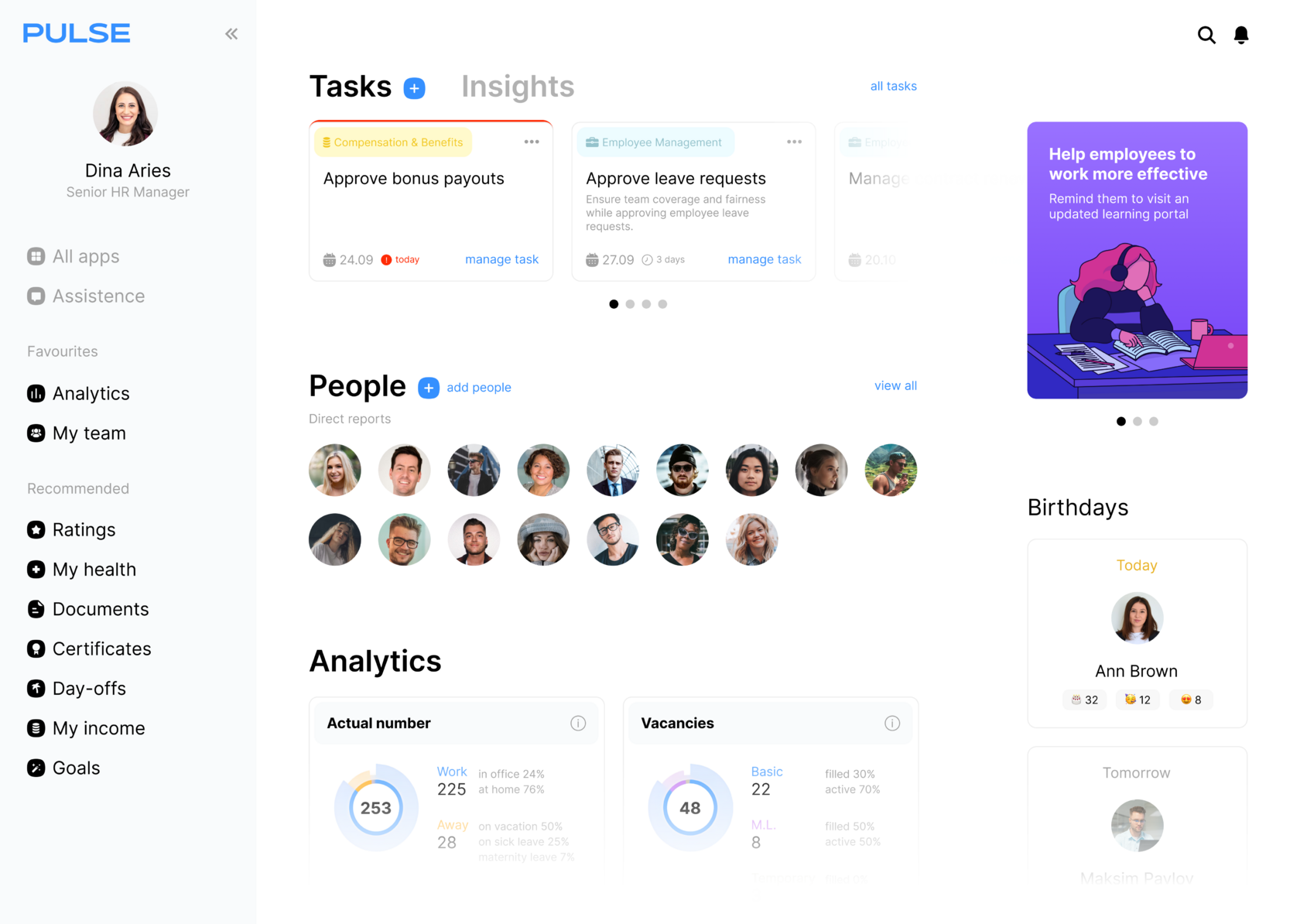
The Process
User Research & Interviews
I conducted interviews with HR specialists to see how they actually worked day to day. The biggest pain points were scattered tools, too many manual steps, and no clear overview of team performance. These insights helped me focus on simplifying navigation, merging core HR actions, and building dashboards that made sense for each user type.
Wireframing & Prototyping
I translated these findings into quick wireframes to share early prototypes with HR specialists and stakeholders, then developed high-fidelity prototypes to illustrate complete user journeys across all modules.
Design & Collaboration
During the design of SberPulse, I worked closely with developers, product managers, and data teams to translate complex HR workflows into intuitive interfaces.
We shared interactive prototypes with HR teams and company stakeholders, gathering feedback on clarity, task flows, and new features. Since our main test audience – the HR department – was enthusiastic about the new platform, I leveraged their input extensively to gather insights and deliver a polished, practical version that aligned closely with real-world workflows.
We shared interactive prototypes with HR teams and company stakeholders, gathering feedback on clarity, task flows, and new features. Since our main test audience – the HR department – was enthusiastic about the new platform, I leveraged their input extensively to gather insights and deliver a polished, practical version that aligned closely with real-world workflows.
Release & Scale
SberPulse started out as a simple HR automation tool, but it quickly evolved into a full digital ecosystem, handling everything from team management and employee benefits to learning and development.
As part of this expansion, we enhanced the experience for managers, and I led the design of the team management features. This included AI-powered dashboards that visualize team health and performance in real time, highlight potential burnout, and suggest proactive actions before issues arise.
Later, we redesigned the platform for all employees, adding a 24/7 virtual assistant for HR requests and a personalized learning feed tailored to each person’s role and goals – all accessible via a convenient mobile app.
As part of this expansion, we enhanced the experience for managers, and I led the design of the team management features. This included AI-powered dashboards that visualize team health and performance in real time, highlight potential burnout, and suggest proactive actions before issues arise.
Later, we redesigned the platform for all employees, adding a 24/7 virtual assistant for HR requests and a personalized learning feed tailored to each person’s role and goals – all accessible via a convenient mobile app.


